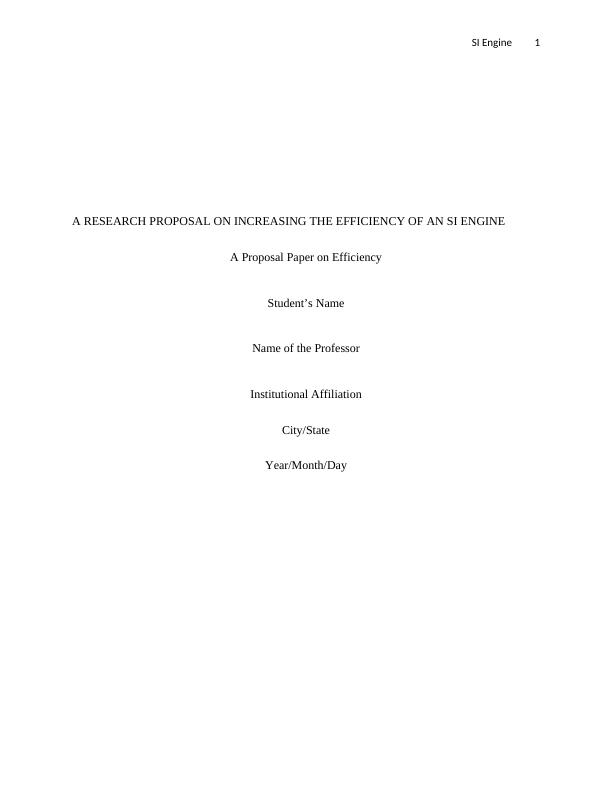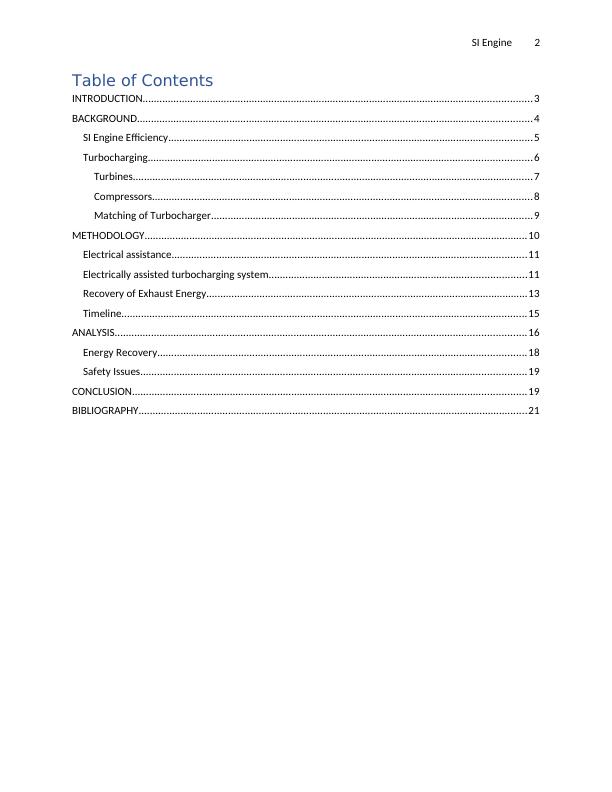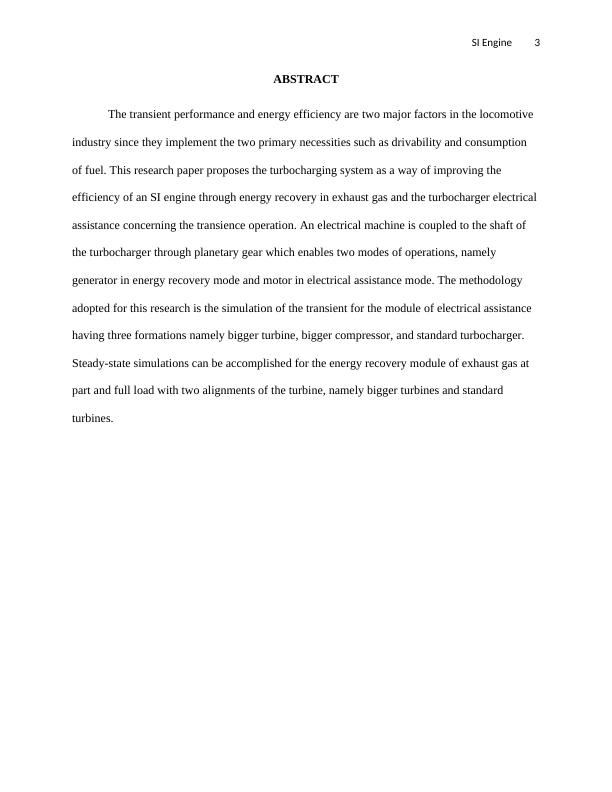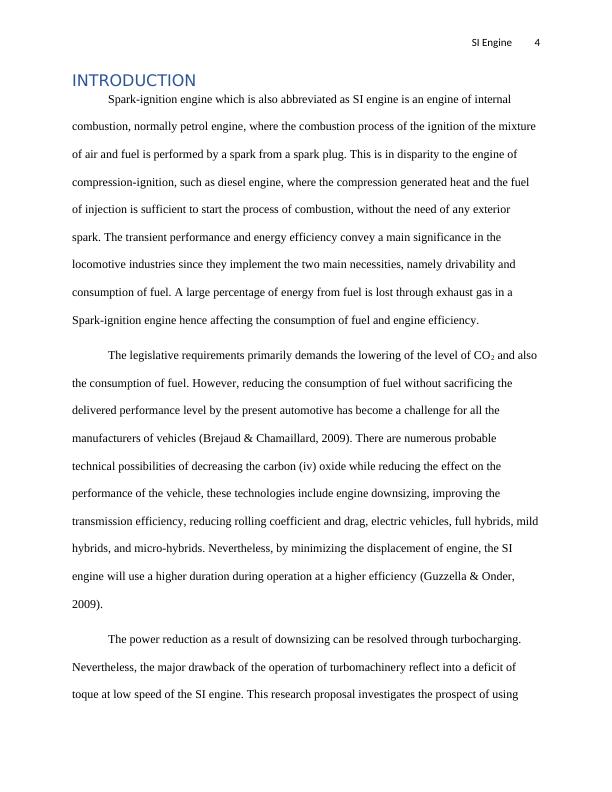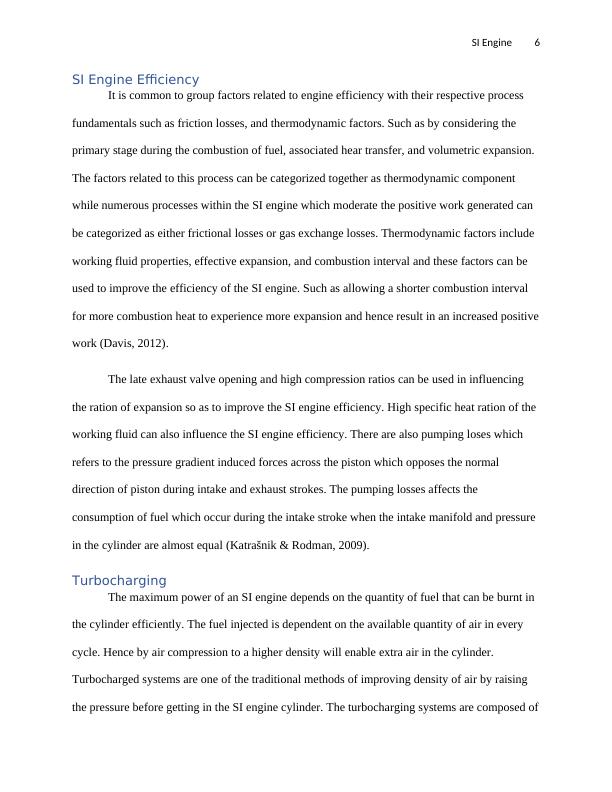Increasing Efficiency of SI Engine with Turbocharging and Electrical Assistance
Marks are specified for each aspect of your assignment. You should study this marking guide carefully and test whether your assignment fits each criterion before you upload it. Language and presentation Professional style, grammar, spelling, layout Maximum score 10 Does it promise research, not just an idea? Does it clearly outline a research agenda, a plan of work that you intend to perform? (Not just an idea) Maximum score 10 Title and abstract Does the title make it clear that it is a proposal? Does the abstract briefly define research you intend to perform? Maximum score 10 Introduction and background Does the introduction 'put the reader in the picture' about the research you intend to perform? Does the background show need, plus prior work with citations that you will build on? Maximum score 20 Methodology and timeline Is there a clear description of the experiments or data mining you intend to perform? Is that data clearly defined? Is there a Gantt chart of your milestones? Maximum score 20 Analysis and conclusions Is there a clear definition of how the data will be analysed? Is there a clear expression of the conclusions that you can draw? Maximum score 20
Added on 2023-06-04
About This Document
Increasing Efficiency of SI Engine with Turbocharging and Electrical Assistance
Marks are specified for each aspect of your assignment. You should study this marking guide carefully and test whether your assignment fits each criterion before you upload it. Language and presentation Professional style, grammar, spelling, layout Maximum score 10 Does it promise research, not just an idea? Does it clearly outline a research agenda, a plan of work that you intend to perform? (Not just an idea) Maximum score 10 Title and abstract Does the title make it clear that it is a proposal? Does the abstract briefly define research you intend to perform? Maximum score 10 Introduction and background Does the introduction 'put the reader in the picture' about the research you intend to perform? Does the background show need, plus prior work with citations that you will build on? Maximum score 20 Methodology and timeline Is there a clear description of the experiments or data mining you intend to perform? Is that data clearly defined? Is there a Gantt chart of your milestones? Maximum score 20 Analysis and conclusions Is there a clear definition of how the data will be analysed? Is there a clear expression of the conclusions that you can draw? Maximum score 20
Added on 2023-06-04
End of preview
Want to access all the pages? Upload your documents or become a member.

